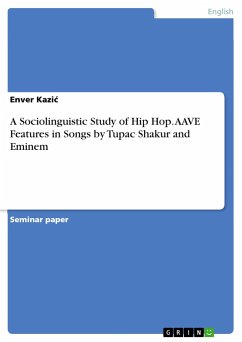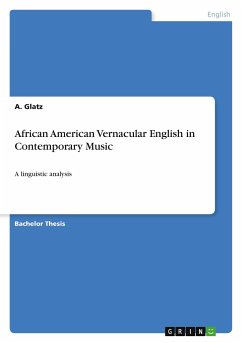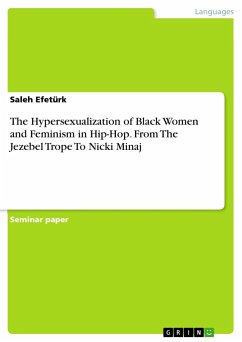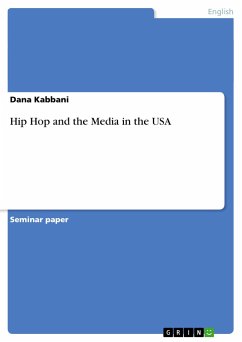Seminar paper from the year 2016 in the subject American Studies - Linguistics, grade: A, , course: Teaching studies, language: English, abstract: Sociolinguistics of Hip Hop music is a relatively new field in sociolinguistics and deals with both social and linguistic aspects of AAVE. Many studies were conducted to analyse Hip Hop lyrics, with both Tupac and Eminem as the target artists; Tupac being the explicitly angry rebel against racial segregation and Eminem being the sarcastic and incredibly eloquent young man who had managed to enter the Hip Hop safe zone of African-Americans and strike them dumb. However, a detailed comparison study of AAVE features and variations between the two was not yet conducted, or at least published. This small-scale research study aims to analyse five of the most popular songs by each artist, to quantify, compare and contrast AAVE features in some of the most popular lyrics globally and to provide an option for the social background of each song,analysing their purpose, message and language. This paper will answer two of the most obvious questions in Hip Hop sociolinguistics, i.e. whether there is any difference in use of AAVE features between a black rapper and a white rapper, where both are considered masters of their profession. Another question is whether any of them is linguistically "better" than the other, i.e. leaning towards SE. A common string of features was analysed and quantified for the purpose of comparison and the results were somewhat surprising. However, the songs which were selected have a serious background to them, possibly affecting both artists' use of language.








